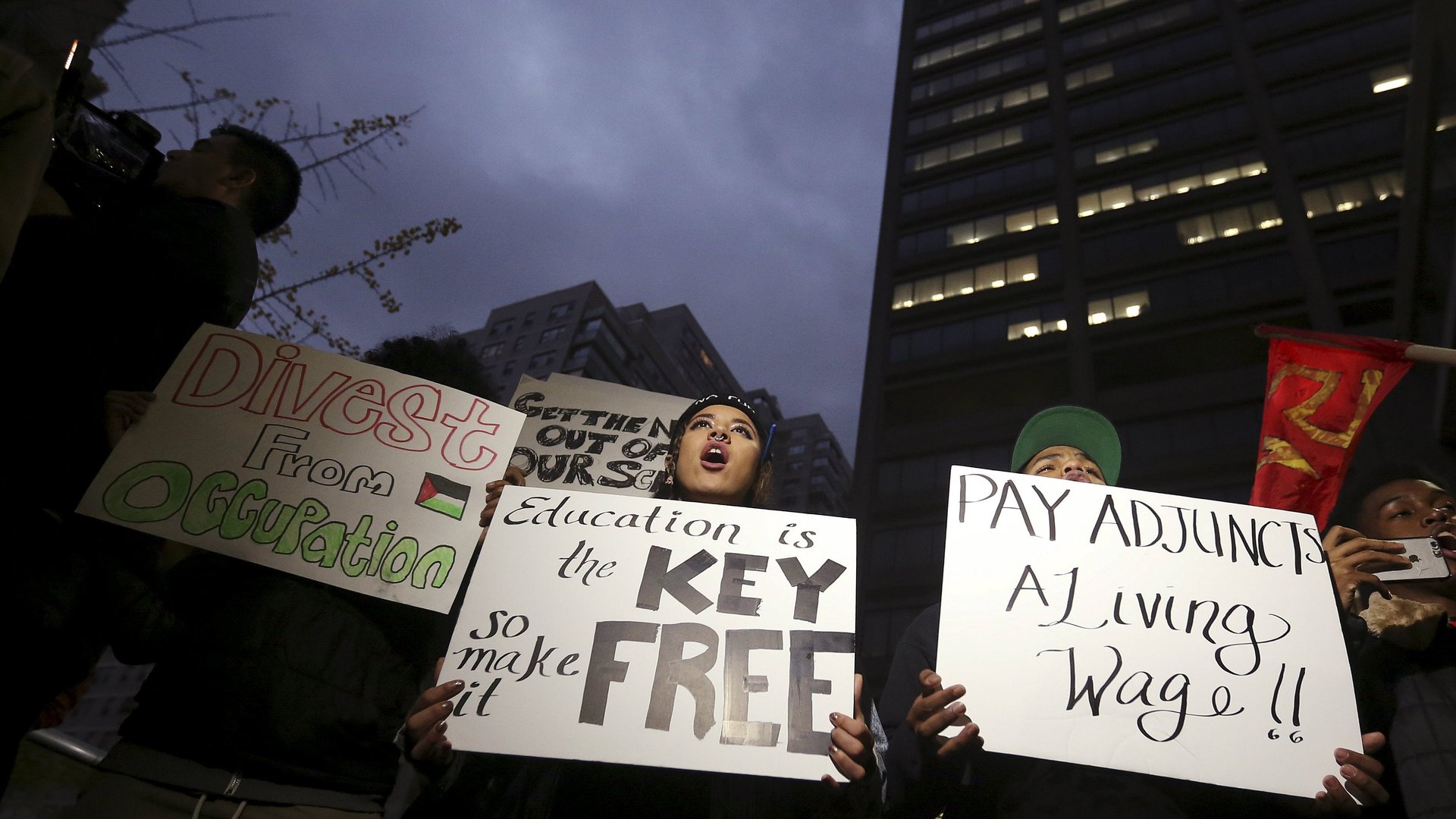Free tuition doesn’t solve the biggest problem with college in America
Last week, students marched across America demanding free tuition. But if their goal is making higher education more accessible, free tuition won’t work. It is a blunt and ineffective tool to increase the number of college-degree holders. Not only because it benefits richer students more, but also because it doesn’t address the biggest risk facing low-income students—dropping out of college before they finish.


Last week, students marched across America demanding free tuition. But if their goal is making higher education more accessible, free tuition won’t work. It is a blunt and ineffective tool to increase the number of college-degree holders. Not only because it benefits richer students more, but also because it doesn’t address the biggest risk facing low-income students—dropping out of college before they finish.
In an age of growing economic inequality, expanding and improving education is the most growth friendly way to ease widening income disparities. But merely sending more people to college isn’t working. Recent research shows the income gains from enrolling in college education is riskier than ever. While on average, college pays off, you take a chance that the debt and years of forgone earnings won’t increase your income after all. The figure below illustrates the range of lifetime incomes for men, estimated from the March Current Population Survey. The first column is the 10th percentile of lifetime earnings, what low achievers will earn. The middle is the median, what average earners will earn. The third is the 90th percentile, what high achievers earn.
College is no sure bet. You might only earn $600,000 in your lifetime, while someone with a high school diploma earns $800,000. But the odds are good: if you finish a four-year degree, you will earn significantly more money. Even if you fall into the lower tail of earnings, a college graduate earns a decent amount. It is better to be an under-achieving college graduate than a low-earning high school diploma holder. There’s even some value to completing a two-year degree, especially if it is technical. However, if you drop out, yours odds of out-earning the high school graduate are not as good. You may earn slightly more, but if you end up on the low-earning track, your time in college was a waste of time and money. College is a risky bet, but the biggest risk is going and not finishing.
The authors of the college wage risk study speculate that students destined to be under-achievers are the ones who drop out or wind up underemployed (they have a degree but not a job that requires one). They argue free tuition may induce more people to enroll, but it will do little to increase the number of graduates or earnings. The paper suggests some people just don’t belong in college, and those marginal waste their time and money enrolling. But this doesn’t square with the fact that students from low income families tend to be the ones who flounder and drop out. Their high drop out rate suggests what’s going wrong masks a deeper problem free tuition can’t fix.
Other research shows that free tuition doesn’t keep high-achieving, low-income students from dropping out, if they attend a low quality school. Fees aren’t the only problem they face, school quality and the resources per student make a big difference. Low-income students often enroll poorly prepared from inadequate secondary school and many lack family support to push through when college gets hard. Negotiating the college bureaucracy is hard, it’s even harder to persevere when you have few college graduate role models.
More resources can help at risk students with these issues. The City University Of New York (CUNY) launched a pilot program in its community college system, called Accelerated Study in Associate Programs (ASAP). It not only offers tuition assistance, most critically it offers emotional support, tutoring, and accountability to help low-income students thrive. The program so far has been very effective, 57% of students in the program graduated, compared to just 17% across all of CUNY. The program also increased the number of students who went on to a four-year degree by 7.8 percentage points, 25% compared to just 17% in the control group.
Programs like ASAP are expensive and labor intensive. But they can make college pay off for those who need it and it’s a much better use of money than free tuition for all.